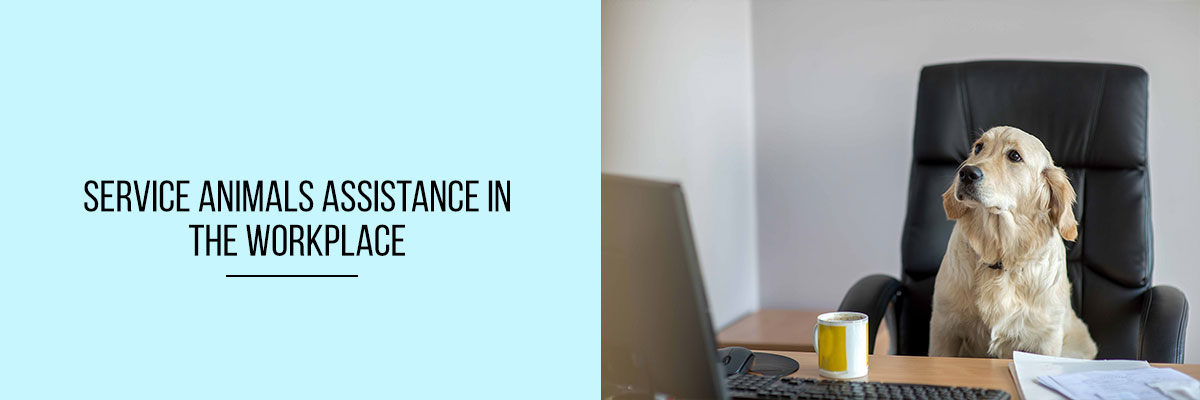Service animals enable people with disabilities to function independently. An estimate suggests that there are over 20,000 service animals who are assisting their handlers in their day to day life. It is not very uncommon to find people taking the help of service animals in the workplace. However, while taking service animals to the workplace and using their services, you need to be aware of whether your action is covered by the ADA or not. But, first of all, one needs to have a fair idea about the need for service animals in the workplace.
Needless to say that people bring service animals to workplaces out of compulsion and not out of choice. These are not pets; these are more like a guide or enabler for people with disabilities. Keeping a service animal is an expensive affair, yet people with disabilities need to have them. It costs between $20,000 to $50,000 to train an animal and hone its qualities to be fit for a service animal.
Types Of Duties Of Service Animals
Commonly, when we refer to service animals, an image of a trained dog offering navigation to its low vision or blind handler props up before our eyes. However, service animal doesn’t just help people navigate. They can also alert people about impending dangers if the handler is hard of hearing or deaf and cannot listen to sounds of vehicles, people and others.
Dogs trained in specific ways can alert their handlers in specific situations. For a person who is prone to seizure attacks, a service animal trained to detect seizure attacks can detect if a seizure attack is imminent, and help its handler find a safe place. In fact, service animals can help their handlers in a number of ways.
ADA’s Interpretation Of Service Animals
Under the Americans with Disabilities Act, disability of a person where a service animal can be of help may include physical, psychiatric, intellectual, sensory as well as mental disability. In essence, a service animal just needs to be trained in the most proper way to help its handler cope with a situation arising out of that specific disability. In essence, every disability need not be as obvious as blindness; there are many other types of disability as well which are not so obvious, yet may call for the help of a service animal.
In the case of a workplace, HR personnel must identify both obvious and non-obvious disabilities. It is the ADA that empowers people with non-obvious disabilities too to take the help of support animals. This is a right that people with disabilities enjoy even in workplaces. However, while bringing animals to workplaces, their handlers must be well aware of the definition of service animals in terms of the ADA.
Conclusion
People take the help of animals not just for physical support, but also for emotional support. They also use service animals as comfort animals. However, these animals don’t come under the purview of service animals according to ADA. So using animals as emotional support or comfort animals is not protected by the ADA. However, Title I of the ADA does accommodate such animals to a reasonable degree.


